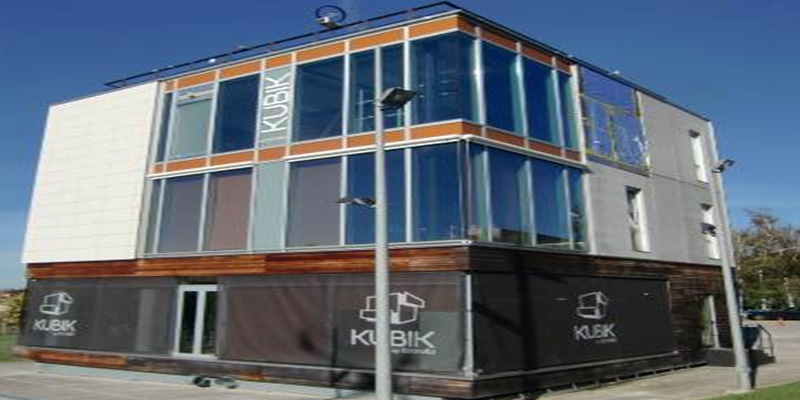Downloads
DOI:
https://doi.org/10.7480/jfde.2015.1.921Keywords:
Thermal insulation, building envelope renovation, thermal bridges, performance under real conditionsAbstract
The challenges of achieving the 2020 goals in terms of energy savings and improving efficiency are guiding numerous research initiatives looking for more insulated envelopes, dealing with thermal performance of insulation materials and envelope systems. Nevertheless, the envelope integrates within the building and this improvement on the insulation performance has to be properly adopted, taking into account the interrelation of main elements composing the overall system (facade, frame, slabs, openings, partitions etc.), as well as side effects originated not only for new erected buildings, but specifically in renovation and retrofitting works. This paper describes real experiences when considering various options for upgrading the facade through the increase of the insulation capacity, starting from external overcladding prefabricated panels and ventilated facades, advancing to more sustainable low carbon systems and ending with even more highly insulated solutions employing aerogels. Lessons from these cases, where energy and hygrothermal assessments have being carried out, demonstrate the influence of the design and construction phases and the relevance of disregarded effects such as minor thermal bridges, uncontrolled craftsmanship on site, and moisture transfer for the different technologies considered. Finally, possible alternatives are provided to overcome some of the detected difficulties, such as combination with non-metallic structural components and building membranes, and being prepared for future challenges and new developments when these isolative elements are combined with other technologies, as for example, renewable energy harvesting devices.
How to Cite
Published
Issue
Section
License
Copyright (c) 2015 Peru Elguezabal Esnarrizaga, Roberto Garay Martinez

This work is licensed under a Creative Commons Attribution 4.0 International License.
Authors or their institutions retain copyright to their publications without restrictions.
References
Basque Government (2012). ERAIKAL - 12 Project Research Study in energy efficiency and feasibility of ventilated façades as renovation solution. Retrieved April 17, 2015 from http://www.garraioak.ejgv.euskadi.eus/contenidos/informacion/estudiokubik/eu_kubik/adjuntos/kubik3.pdf
Economidou, M., Atanasiu, B., Despret, C., Maio, J., Nolte, I., & Rapf, O. (2011). Europe’s buildings under the microscope. A country-by-country review of the energy performance of buildings. Buildings Performance Institute Europe (BPIE).
Capozzoli A., Gorrino A. & Corrado V. (2013). A building thermal bridges sensitivity analysis. Applied Energy, 107, 229-243.
Council Directive 2002/91/EC on the Energy Performance of Buildings. EPDB.
Council Directive 2010/31/EU, on the Energy Performance of Buildings. EPDB (recast).
Council Regulation (E.U.) No 305/2011 laying down harmonised conditions for the marketing of construction products. CPR.
FACOMP, Polymeric nanocomposite profiles for curtain walls, EU FP7 grant agreement no 221989. . Retrieved April 17, 2015 from http://cordis.europa.eu/project/rcn/94166_en.html
Garay R. (2013) New challenges on façade insulation systems with superinsulation materials. First Workshop. High Performance Thermal Insulation (HPI) – 2013 Towards Near Zero Energy Buildings. 27th & 28th November. Würzburg, Germany. Retrieved April 17, 2015 from http://www.buildup.eu/sites/default/files/content/Workshop_First_Announcement.pdf
Latif E., Ciupala M.A. & Wijeyesekera D.C. (2014). The comparative in situ hygrothermal performance of Hemp and Stone Wool insulations in vapour open timber frame wall panels. Construction and Building Materials, 73, 205-213.
Martin K., Flores I., Escudero C., Apaolaza A. & Sala J.M. (2011). Problems in the calculation of thermal bridges in dynamic conditions, Energy and Buildings, 43 529-535.
Ravetz, J. (2008), State of the stock – What do we know about existing buildings and their future prospects? Energy Policy 36(12), 4462-4470.
Shea A., Lawrence M. & Walker P. (2012). Hygrothermal performance of an experimental hemp-lime building. Construction and Building Materials, 36, 270-275.
United Nations Environment Programme – Sustainable Buildings and Climate Initiative, Retrieved March 30, 2015 from http://www.unep.org/sbci/AboutSBCI/Background.asp.
